Why you can trust Tom's Hardware
We set our memory to XMP mode for all three boards, which allowed them to run at DDR4-3600 CAS 16. Amazingly, this produced higher memory bandwidth than the previous-page’s OC settings for both ASRock boards. And while the Gigabyte board had a far greater benefit from overclocking, its stock bandwidth was somewhat poor compared to the ASRock samples.
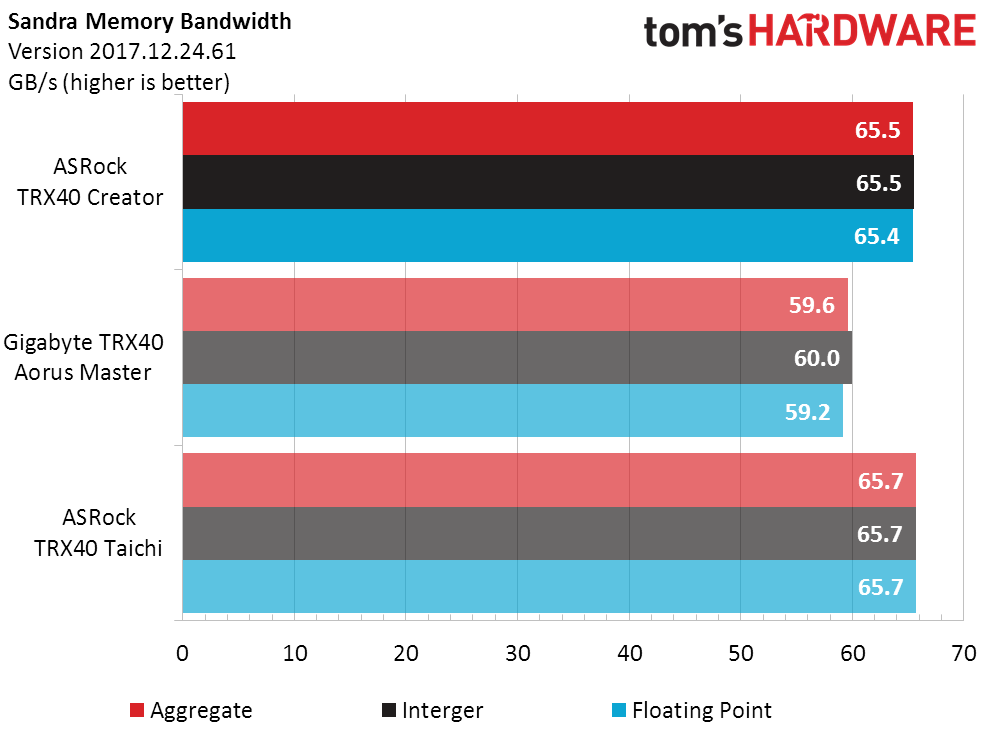
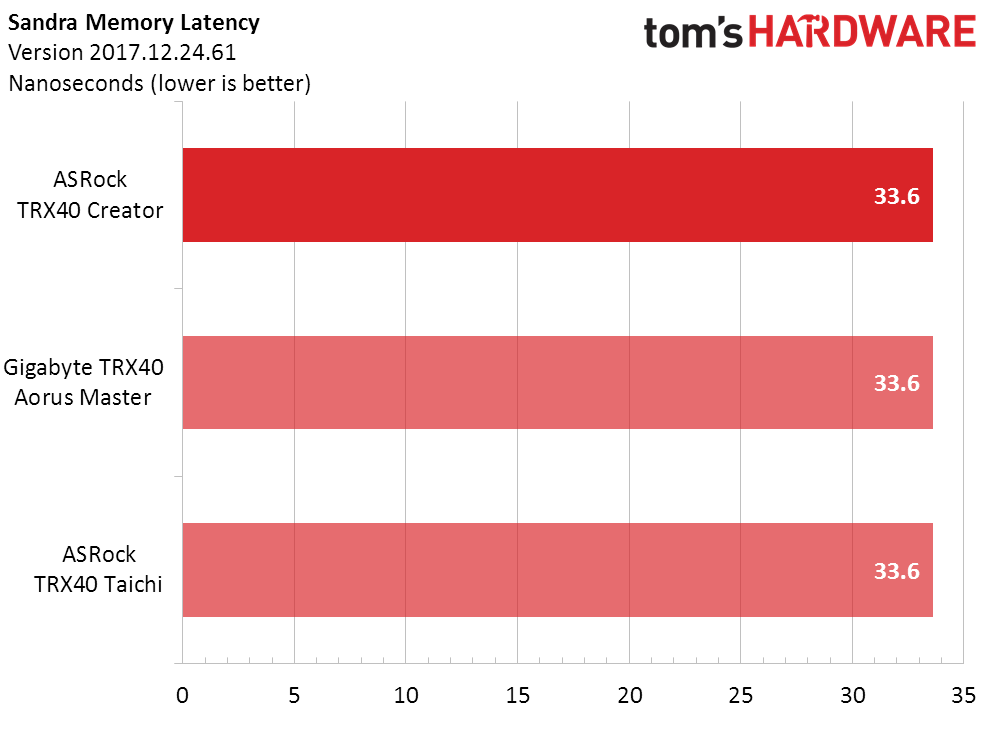

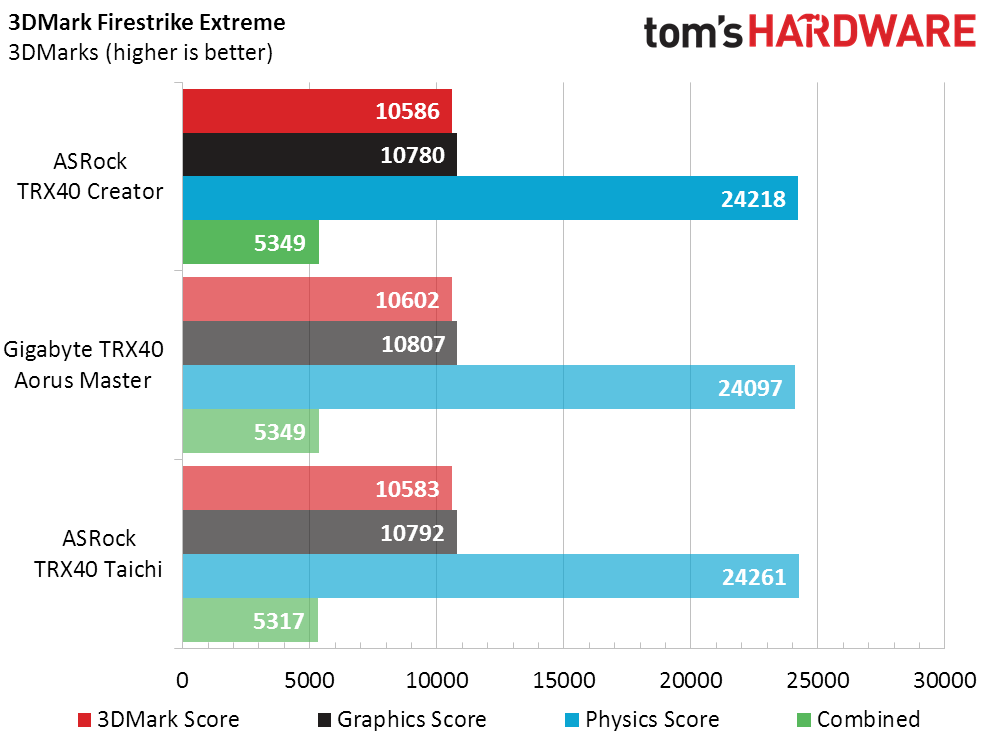
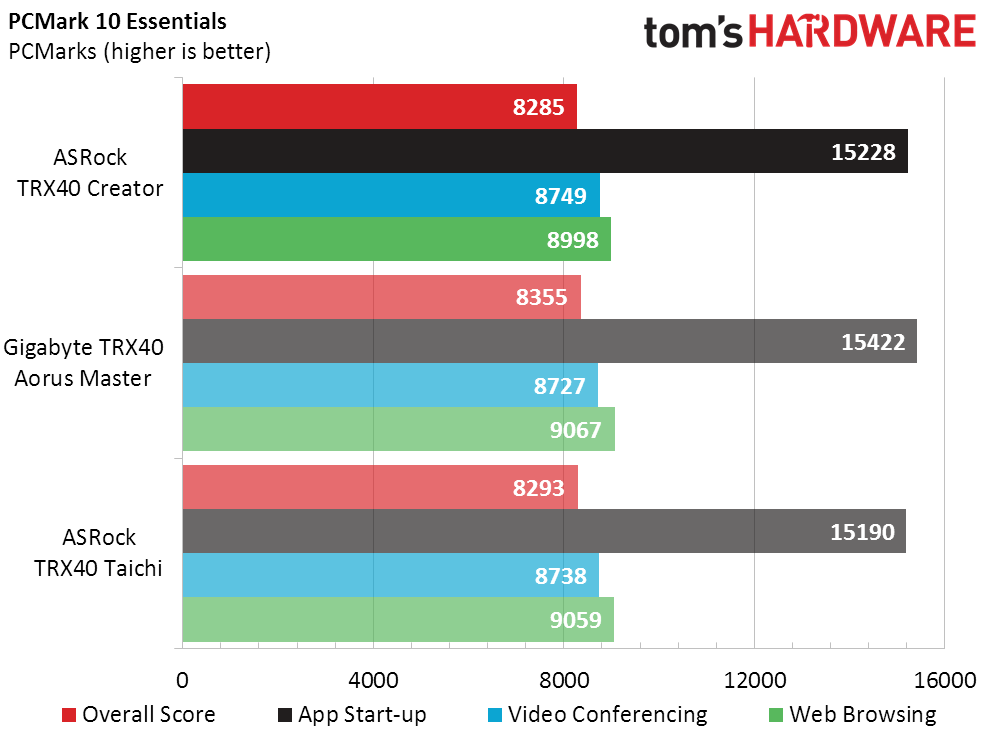
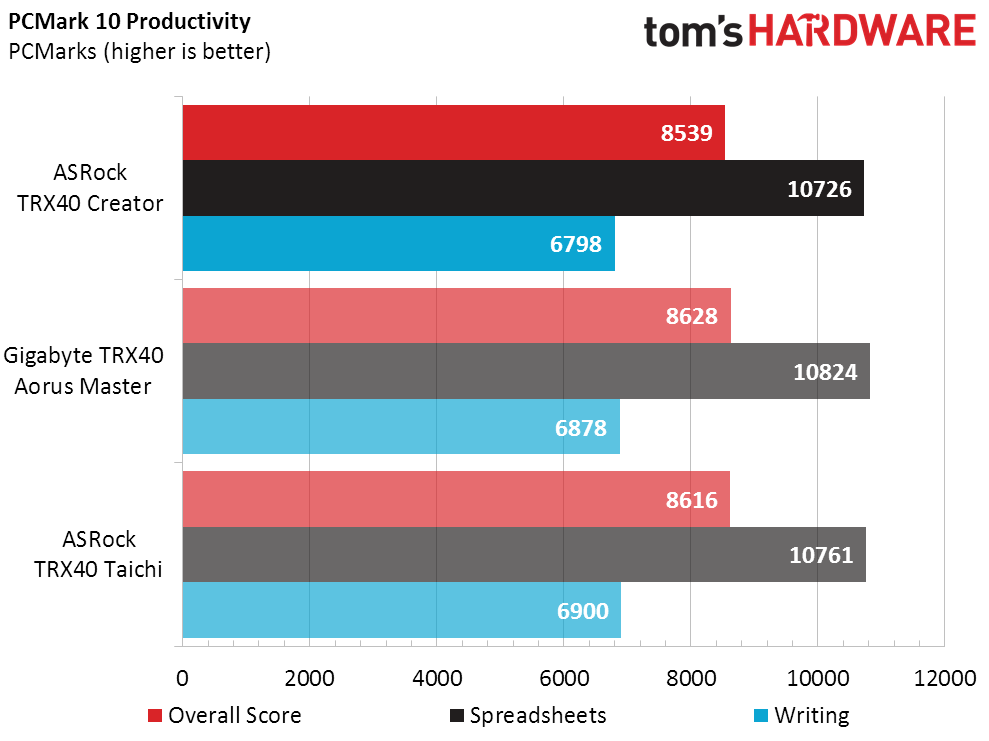

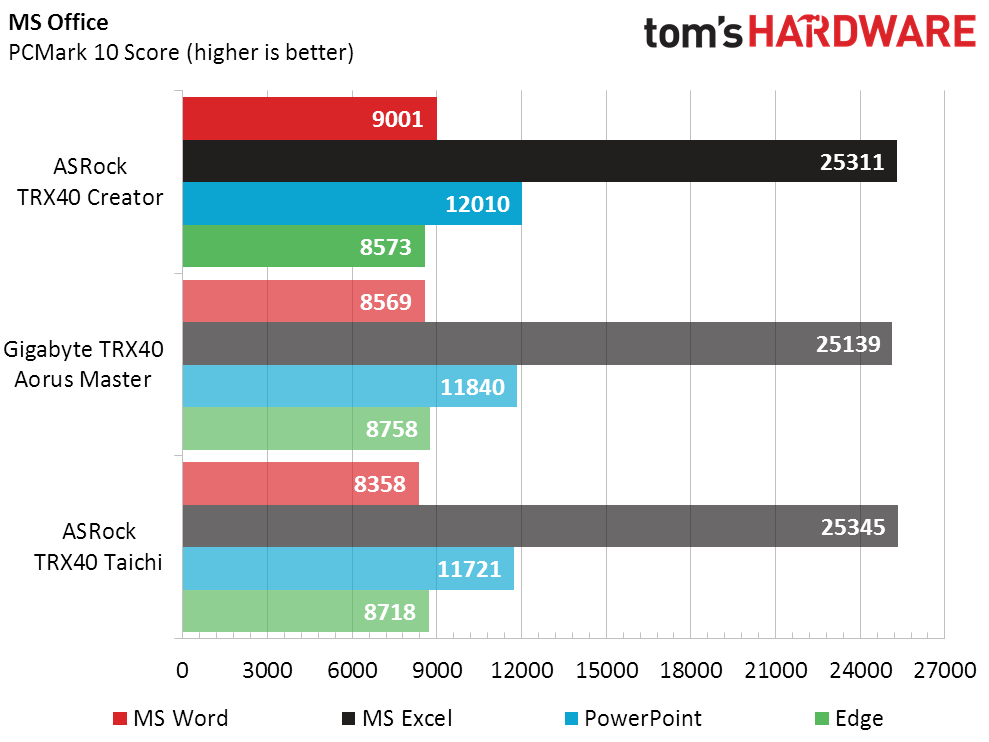
Performance differences are too small to draw any broad conclusions from 3DMark and PCMark results, though the TRX40 Creator wins more often than it loses.
3D Games
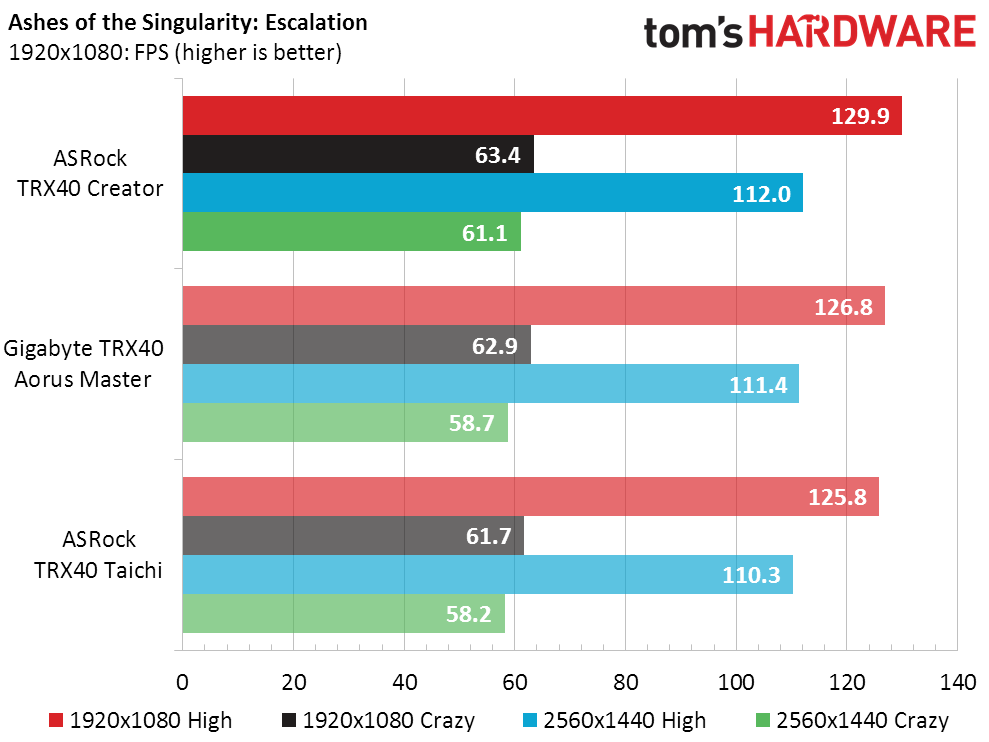

Ashes' “High” settings are rather mediocre by modern standards, but the TRX40 Creators lead at those settings isn’t. It’s odd then that it slightly trailed the TRX40 Aorus Master in F1 2017.
Mixed Applications

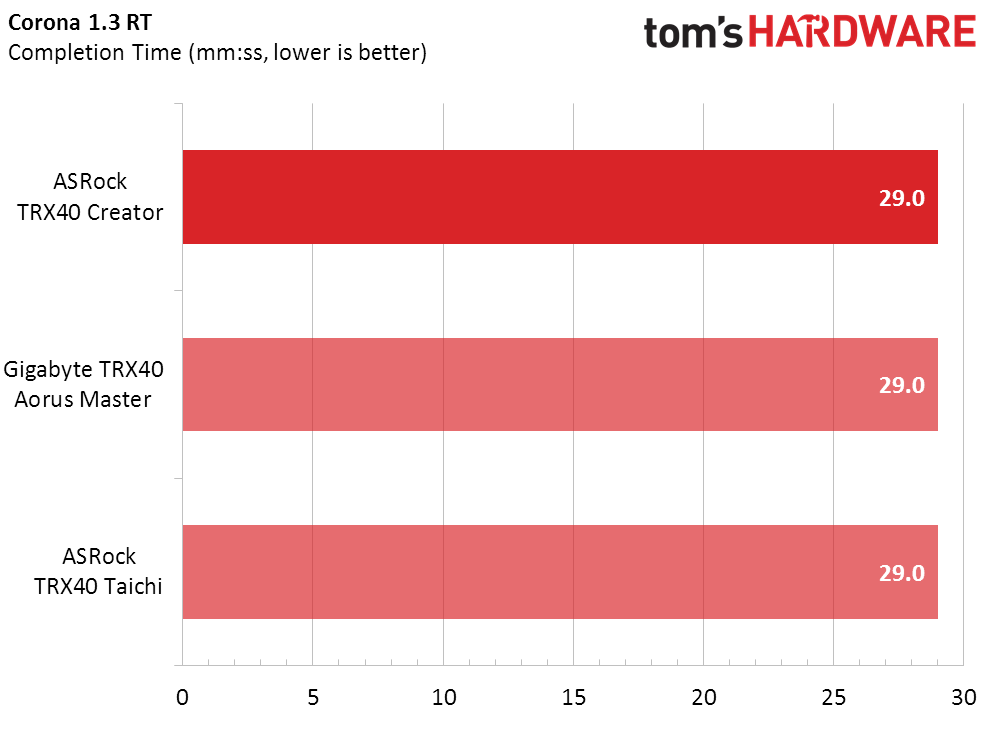
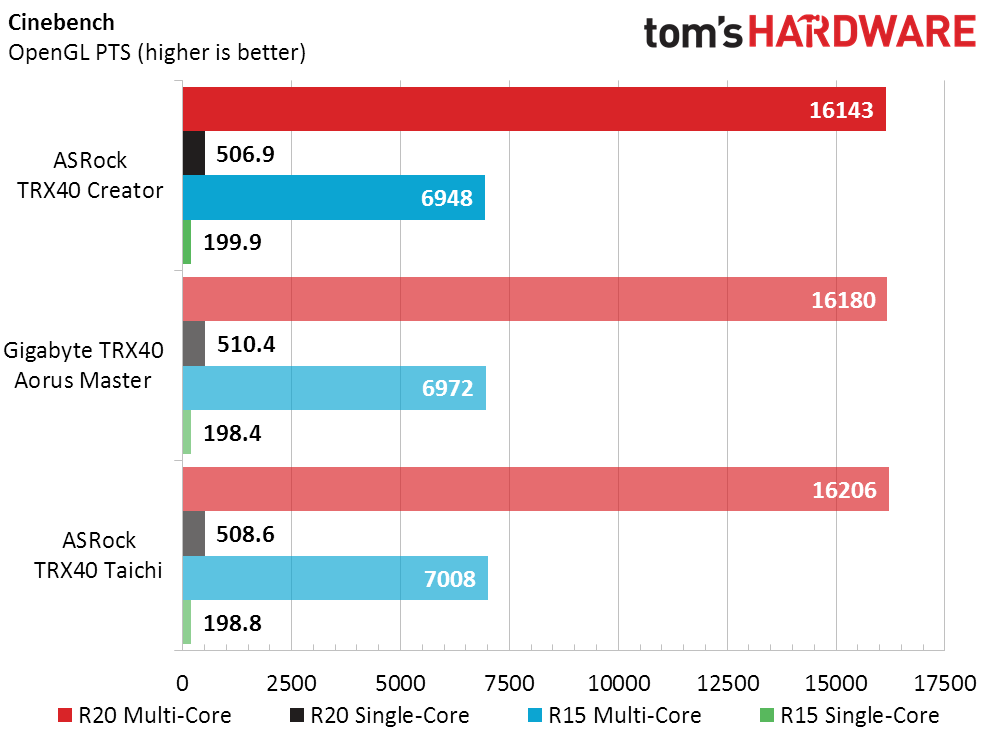
Less time is more performance in timed applications, and the TRX40 Creator fell behind in both 7-Zip compression and Handbrake H.264 workloads. Those losses might not be noticeable to a real-world user, but are certain to impact its overall performance average in our efficiency and value charts.
Power, Heat And Efficiency

The TRX40 Creator drew a little more power at idle than either of its competitors, though differences this small aren’t likely to persuade customers.
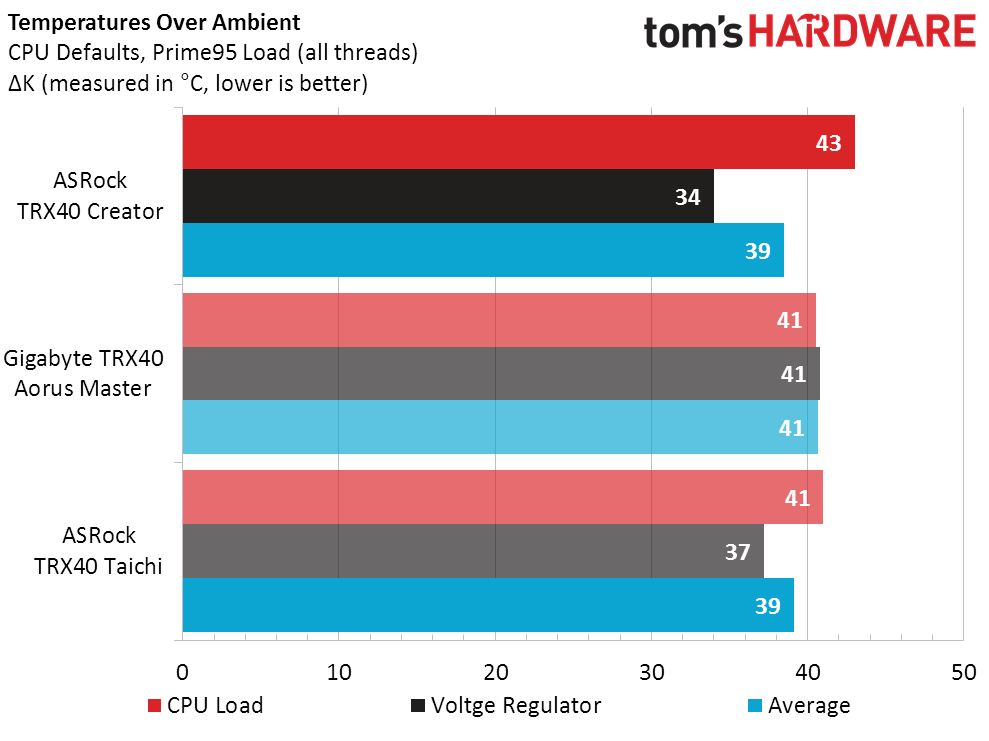
The TRX40 Creator’s smaller voltage regulator heat sink appears to have done a slightly better job of cooling its smaller voltage regulator, compared to its higher-capacity competition.
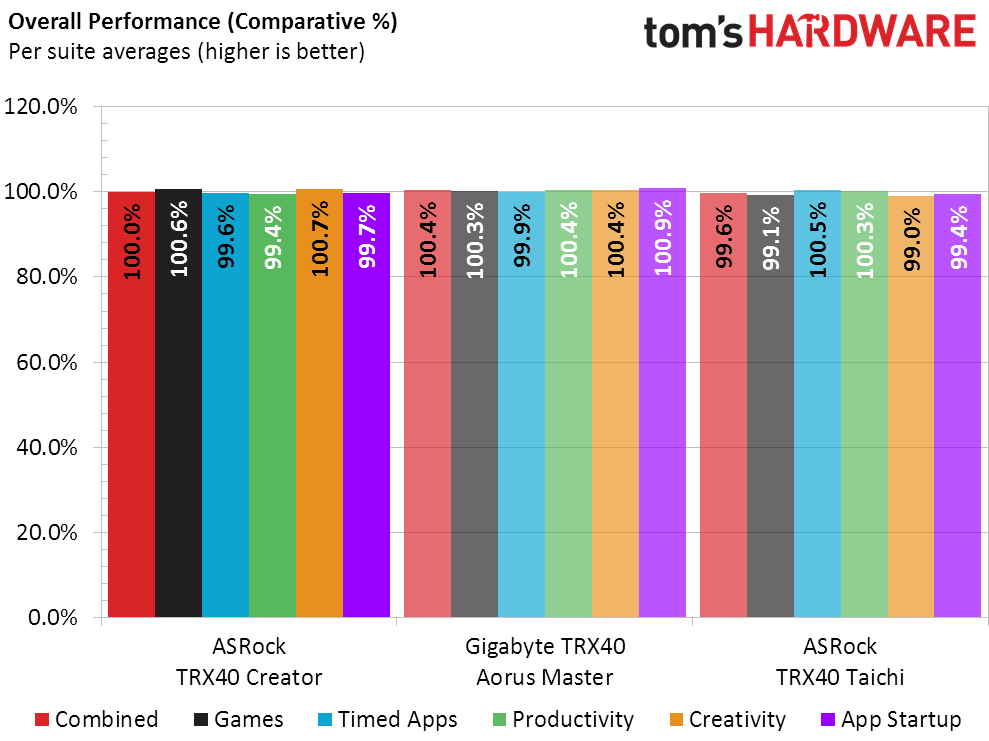
Wins in games and losses in timed apps put the TRX40 Creator dead center in overall performance. We’ll just move that baseline to zero before going to our efficiency calculations, since we wouldn’t want anyone to accuse us of calling anything “greater than 100% efficient”.
Get Tom's Hardware's best news and in-depth reviews, straight to your inbox.
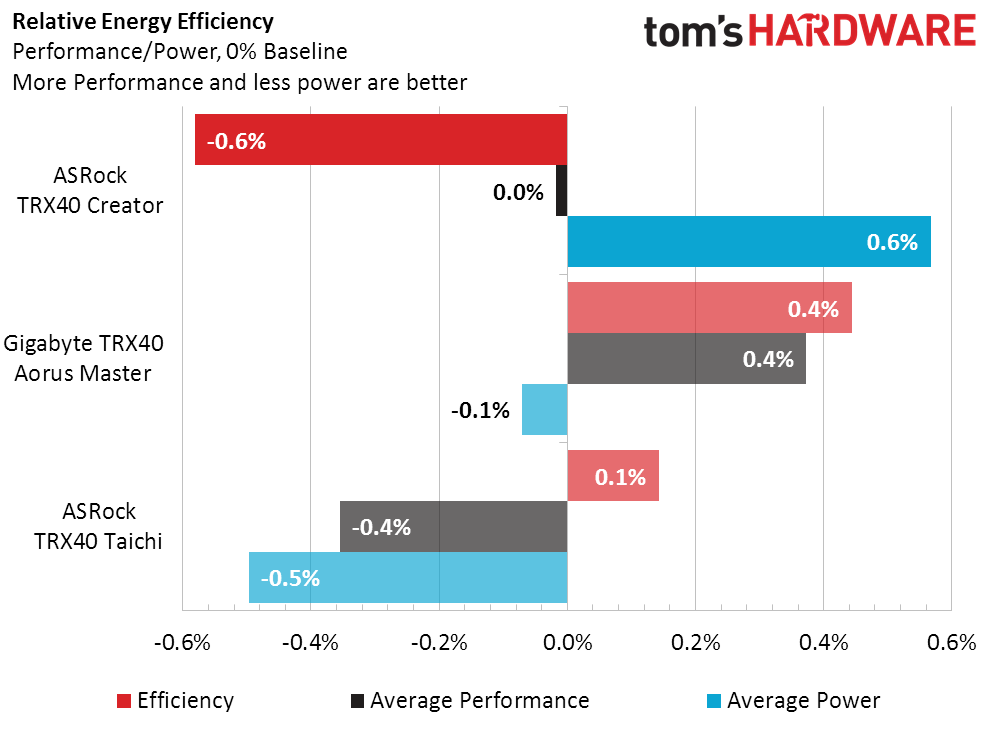
A power increase of 0.6% leads to an efficiency loss of 0.6% when compared to other boards, since the TRX40 Creator’s performance level is so close to the group’s midpoint.
Final Analysis
This is the point where we always talk about value in terms of features per dollar, since the performance between different boards is typically close enough to guarantee a performance-per-dollar victory to the cheapest board. But perhaps the TRX40 Creator is a board with both more features and a lower price?
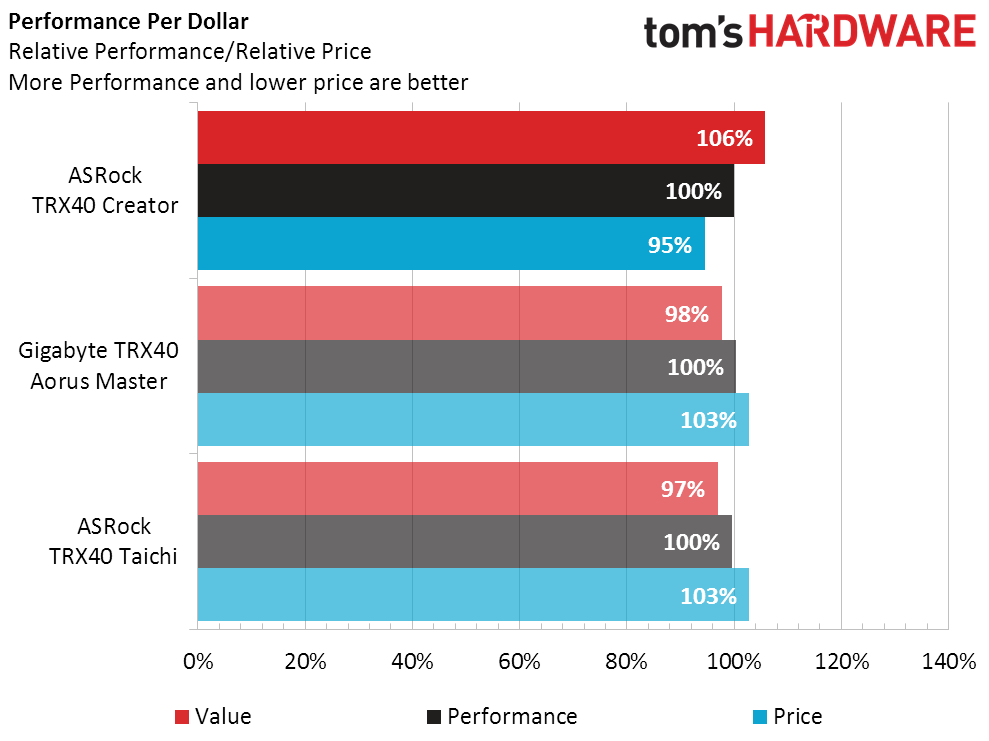
After all, it’s the only board in this group to have 10Gbps Ethernet, and it doesn’t even sacrifice the 2.5Gbps port offered by its competitors to get there. It has both.
On the other hand, it lacks the big voltage regulator of either competing board, which means that the TRX40 Creator probably won’t be well suited to overclocking the upcoming Threadripper 3990X. Then again, give the thermal constraints of placing so many cores in such a small space, overclocking those might not even be possible. Time will tell.
One tiny concern that remains is that the TRX40 Creator’s slot layout is optimized for four-way SLI in an era where most current cards can’t even be configured in three-way SLI. Maybe it’s for extra monitors? Or GPU compute configurations? The later is at least plausible, but we have a feeling that more creative types would want an extra storage card than a third or fourth graphics card, and the only way to place two triple-slot cards and a storage card into a standard ATX case is to put the slots in positions 1, 4, and 7 (with storage on the bottom) or 1, 4, and 5 (with storage in the middle). Neither of those is possible on the TRX40 Creator, but maybe you have something else in mind? Let us know in the comment below.
MORE: Best Motherboards
MORE: How To Choose A Motherboard
MORE: All Motherboard Content
Current page: Benchmark Results and Final Analysis
Prev Page Software, Firmware and Overclocking-
Keith Myers This board is absolutely at the top of my short list. Allows 4 double wide gpus for distributed computing and is inexpensive in comparison to all the other TRX40 boards that only allow 3 cards at max.Reply
This board and a 3960X will replace my aging Xeon four card host which is severely lacking in the math compute performance compared to Ryzen and Threadripper. -
Crashman Reply
This is exactly the type of response I was hoping to hear.Keith Myers said:This board is absolutely at the top of my short list. Allows 4 double wide gpus for distributed computing and is inexpensive in comparison to all the other TRX40 boards that only allow 3 cards at max.
This board and a 3960X will replace my aging Xeon four card host which is severely lacking in the math compute performance compared to Ryzen and Threadripper. -
timvanhelsdingen Amazing looking board, ticks all the boxes while costing less.Reply
Oh and I can clear up the 4 gpu for you pretty easily, as I'll be running it with 4 gpu's:
VFX industry is moving towards GPU rendering and a lot of people will max out their boxes with 4 gpu's to have faster rendertime. Renderengines such as Redshift, Octane, Arnold, Vray, Renderman, all have gpu capabilities in some form or are build around gpu rendering. -
noko I am very impressed with this board. Does give a lot of punch for features. A type C connector for front panel, USB 2 for front panel and USB 3.2 (My case has all three of those connectors) other boards lack type C or USB 2. Back panel is weak for USB's but there are plenty of connectors to add to them. Q code, reset and power button. Clear CMOS and Flash button on back.Reply
No RGB on the board itself except headers - I call that a very cool feature!
There is also a thing called PCIe extenders or cables - even PCIe4x ones now for using those slots anyway you want.
VRMs are one of the weakest but still overkill for 32 cores and down and for stock settings which are almost as fast as the best OC scores. I would most likely use stock settings to maximize any boost frequency for gaming besides more productive type work.
Great review.
